Sudoku Flower
Sudoku Flower is a sudoku variation with four overlapping sudoku grids. Here’s an example:
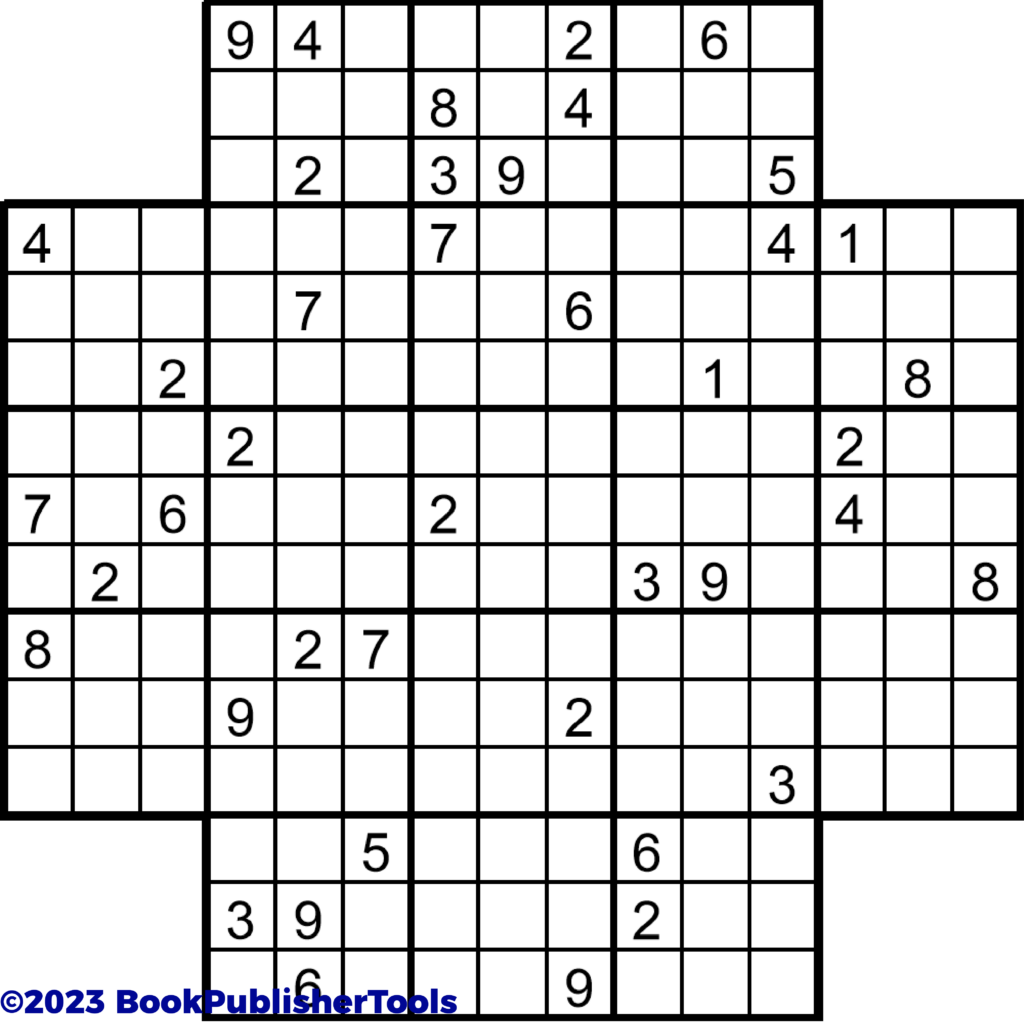
Understanding Sudoku Flower
In this article we’ll help you mastering sudoku flower puzzles. We assume you understand how to solve the regular sudoku puzzles, and help you with easy methods to solve sudoku flower. We’ll use colors to analyze the overlapping grids:
Even though the sudoku may look a bit simpler than some of the other variations, the layout of the overlapping grids can be a bit daunting. But once you understand how they are constructed, they can be solved just like regular sudokus.
In the image you see four grids green (1), yellow (2), red (3) and dark green (4). We’ve indicated the overlapping regions with blue squares and a letter:
- Light blue (A) is part of two different grids
- Blue (B) is part of three overlapping grids (for example grids 1, 2 and 3)
- Dark blue (C) is part of all four grids.
That’s nine different regions that have overlap between the grids. In the following paragraphs we’ll show you how to apply the clues in the different areas
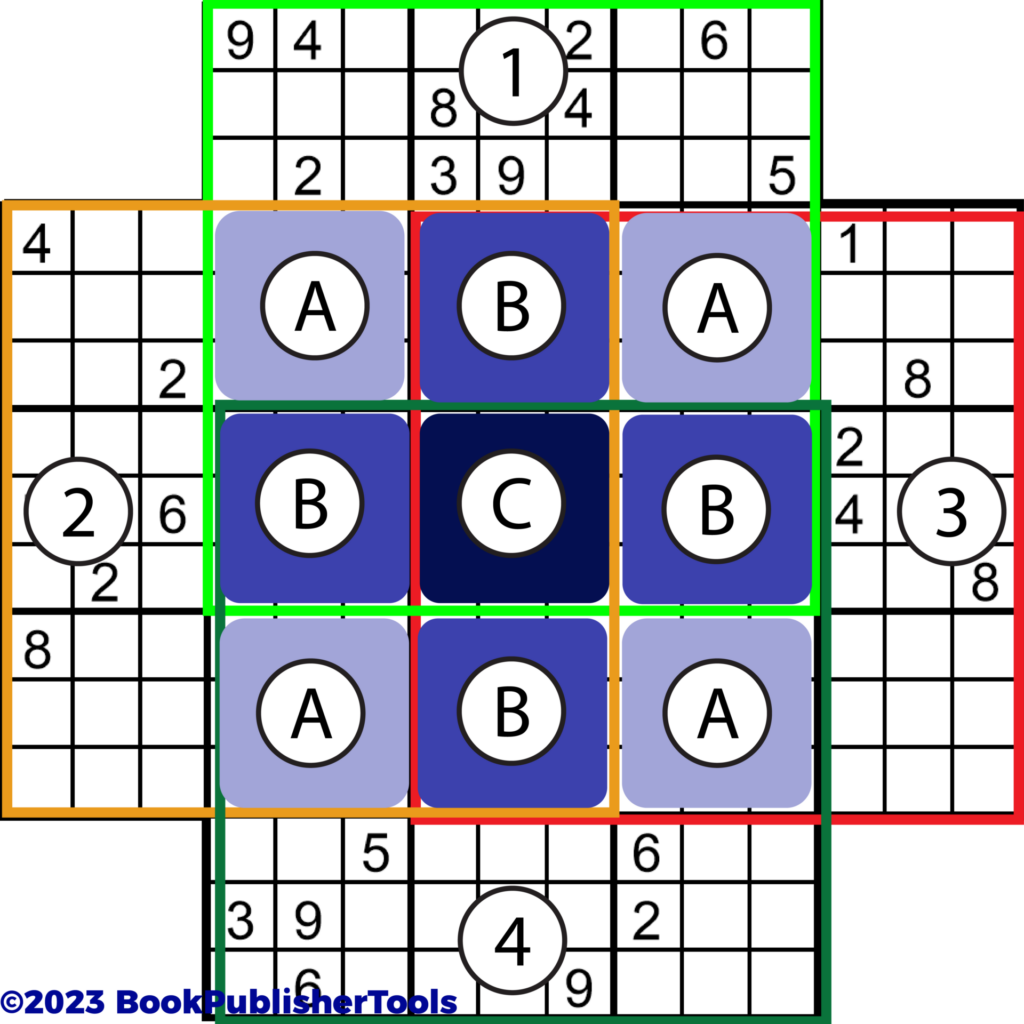
How to solve Sudoku Flower puzzles
One of the basic solving techniques for sudoku flower is to mark the different grids with a colored pencil, to help you see the “line of sight” or the “neighbors” of each clue.
Solving Sudoku Flower – Example 1
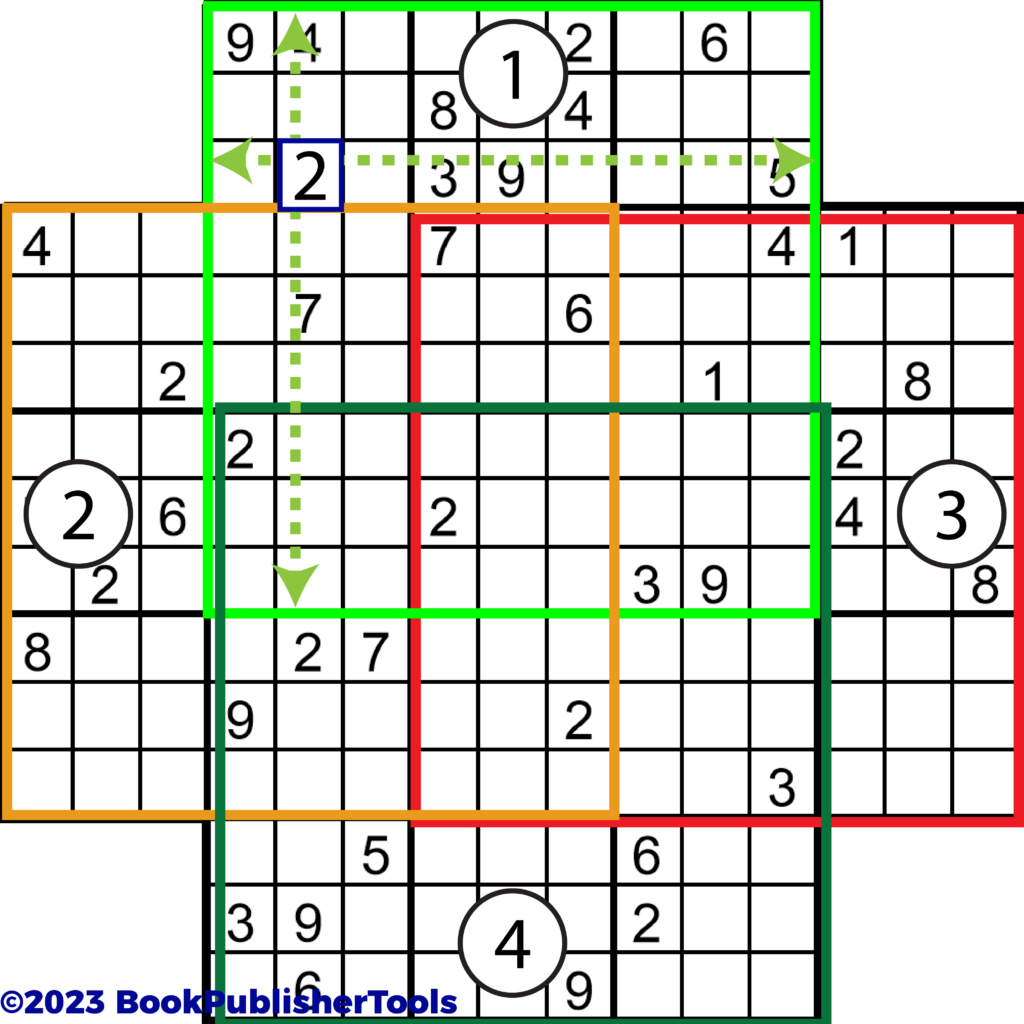
In this first example you see a clue (the number “2”) that is part of the green grid (1) at the top, but not part of the other grids.
This “2” can only be ‘seen’ by cells in the same grid (green grid 1). The blue arrows show which cells are direct ‘neighbors’ of the “2”. These cells cannot contain the “2”.
(Note: we didn’t indicate the small 3×3 region that surrounds the “2”. The usual Sudoku rules apply here.
Solving Sudoku Flower – Example 2
In this example you can see the “7” that’s part of the green grid (1) and the left (yellow) grid (2). The “7” has direct neighbors in both grids.
The green lines with arrows indicted the neighbors in the green grid (1). The yellow lines indicate the neighbors in the yellow grid (2). In all these cells, the “7” cannot be placed, because it’s ‘visible’ from these cells.
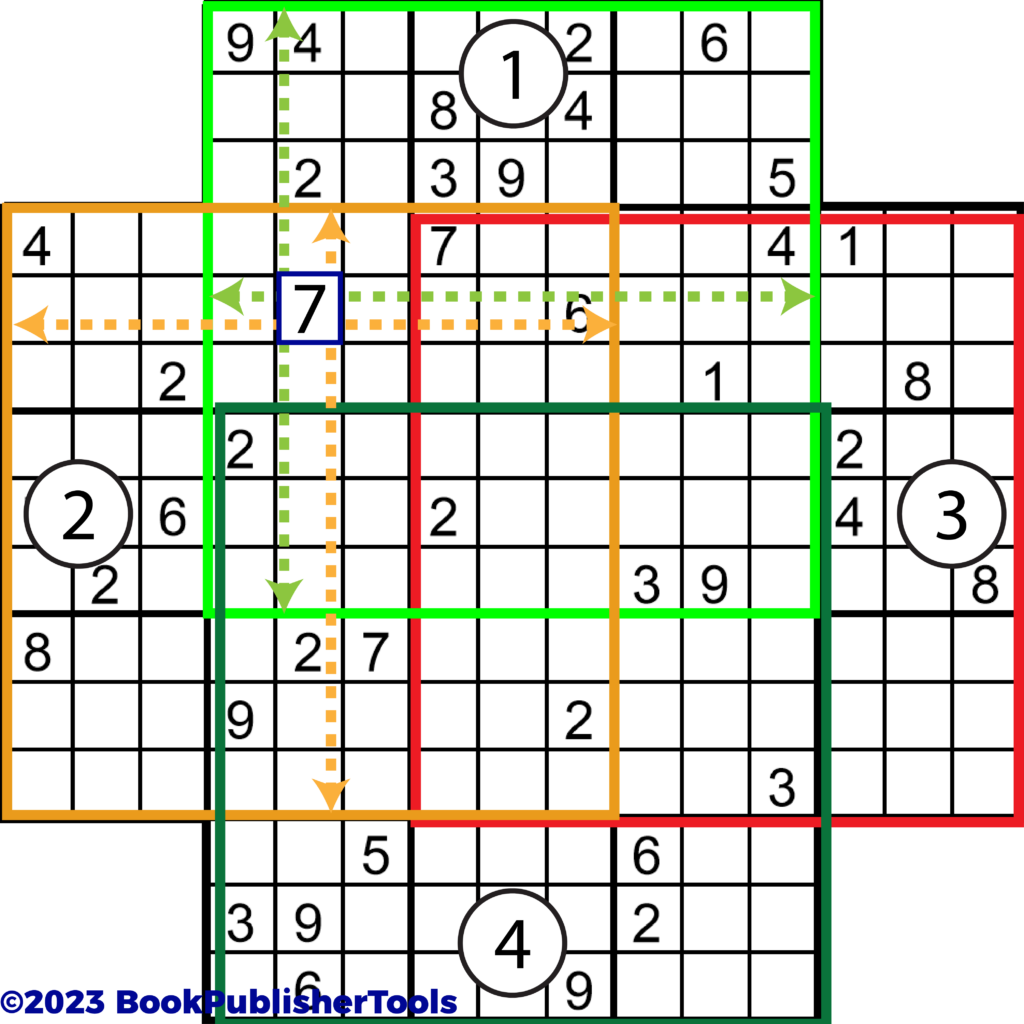
Solving Sudoku Flower – Example 3
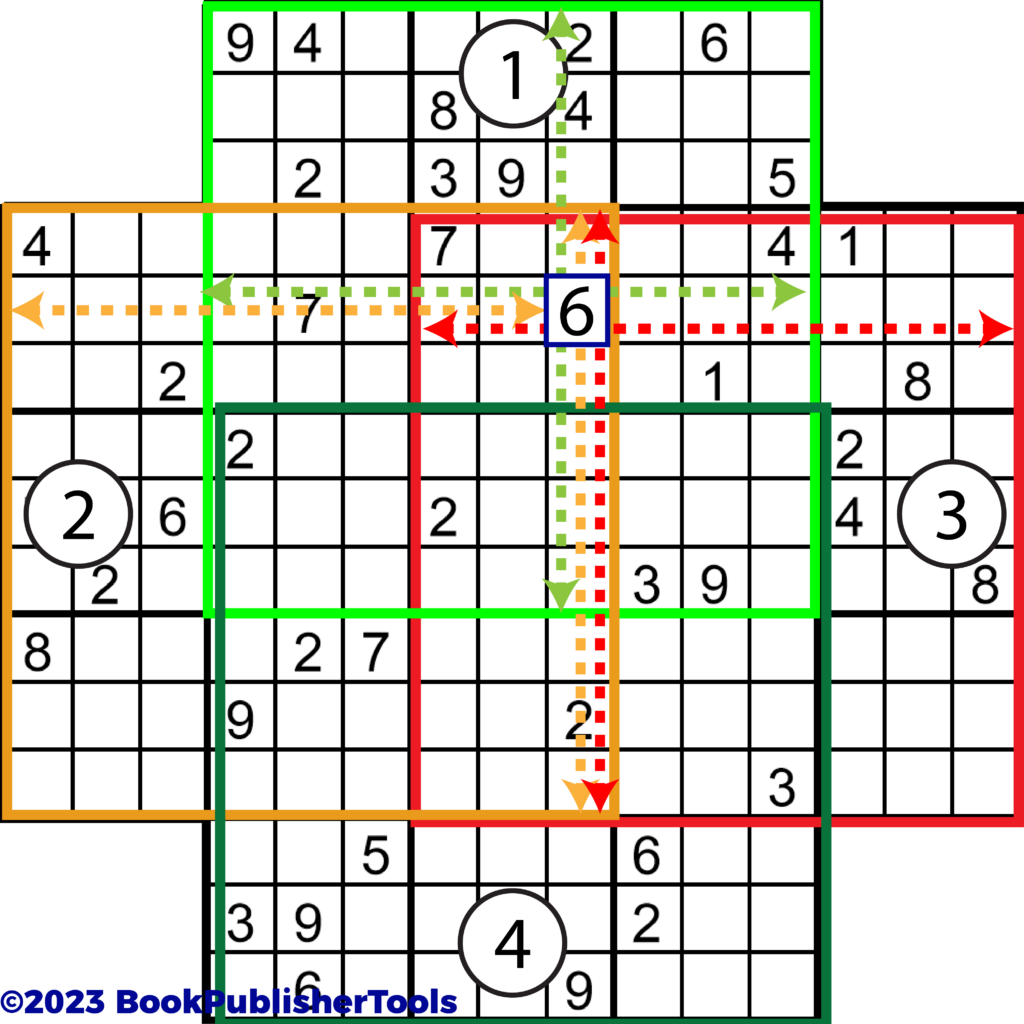
In this example we have chosen the “6” that is part of three different grids: the green grid (1), the yellow grid (2) and the red grid (3).
That means that the “6” cannot appear in the same row in the green grid (1), the yellow grid (2) or the red grid (3), and the “6” can also not appear in the same column in the . green grid (1), the yellow grid (2) or the red grid (3). We’ve indicated this with lines in the color of the grids.
Additionally, the “6” cannot occur anywhere else in the small 3×3 region, which is the common sudoku rule.
Solving Sudoku Flower – Example 4
This final example in our sudoku flower tips and tricks: A clue that appears in all four grids: The “2” in the center region.
We’ve drawn the colored lines again, which results in quite a crowded picture.
The final example is a clue that’s only part of the red grid (1): The “9” at the center.
The 9 numbers at the center of the red grid are not shared with any of the other grids.
The four images below show the ‘line of sight’ for the “2” in each of the four grids:
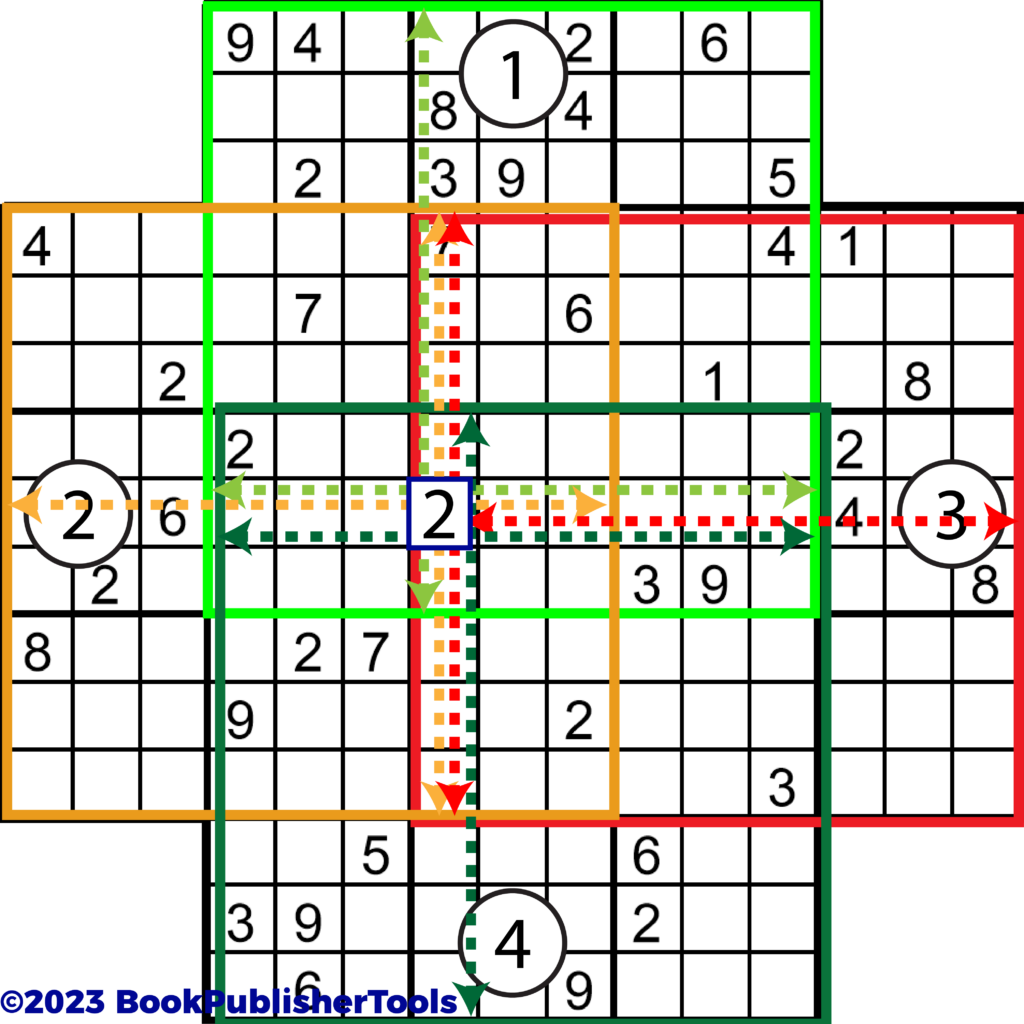
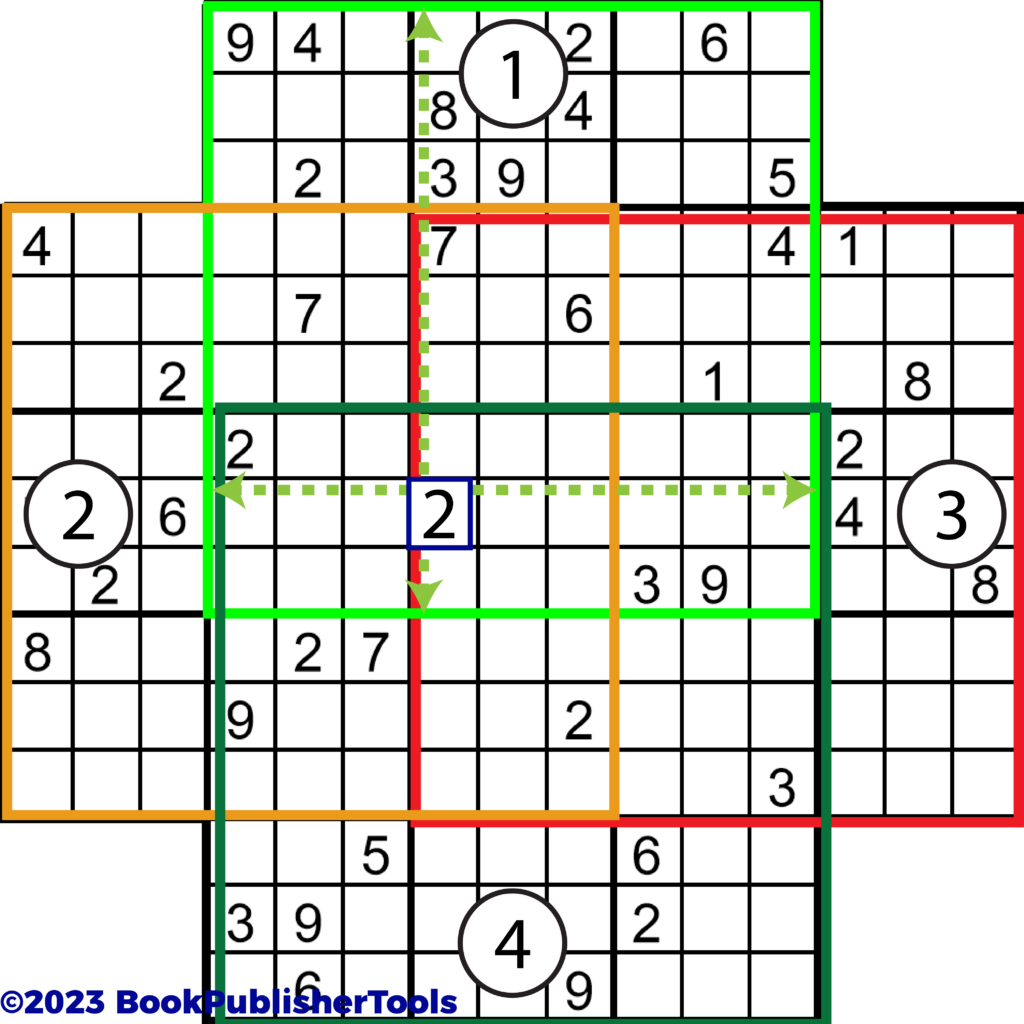
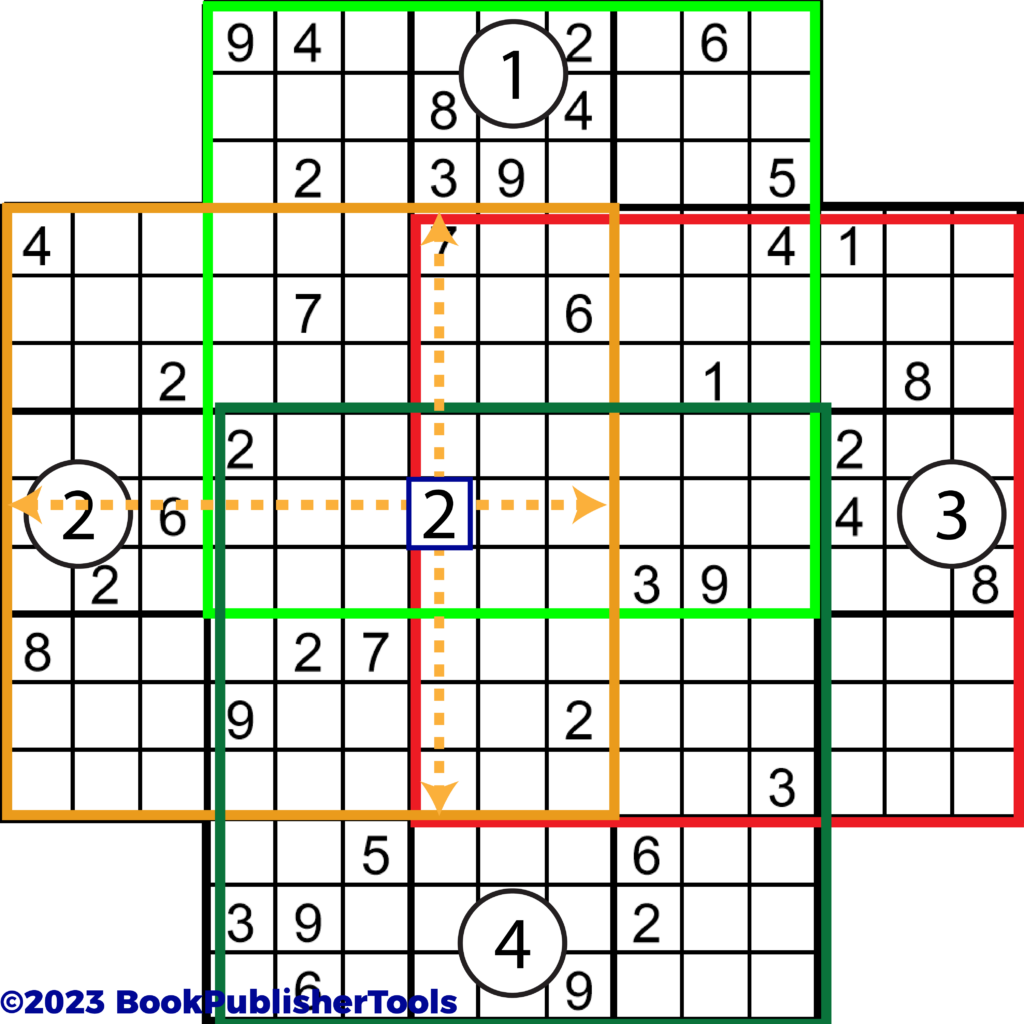
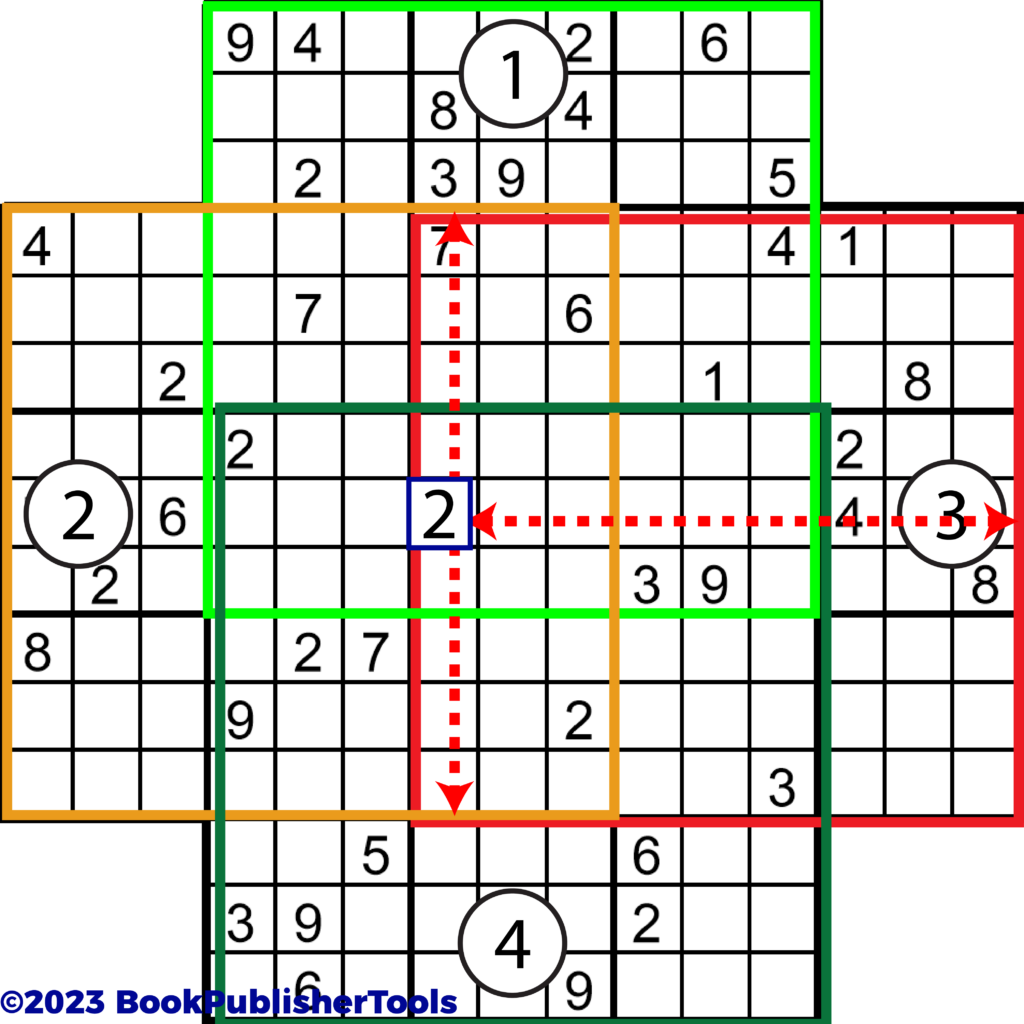
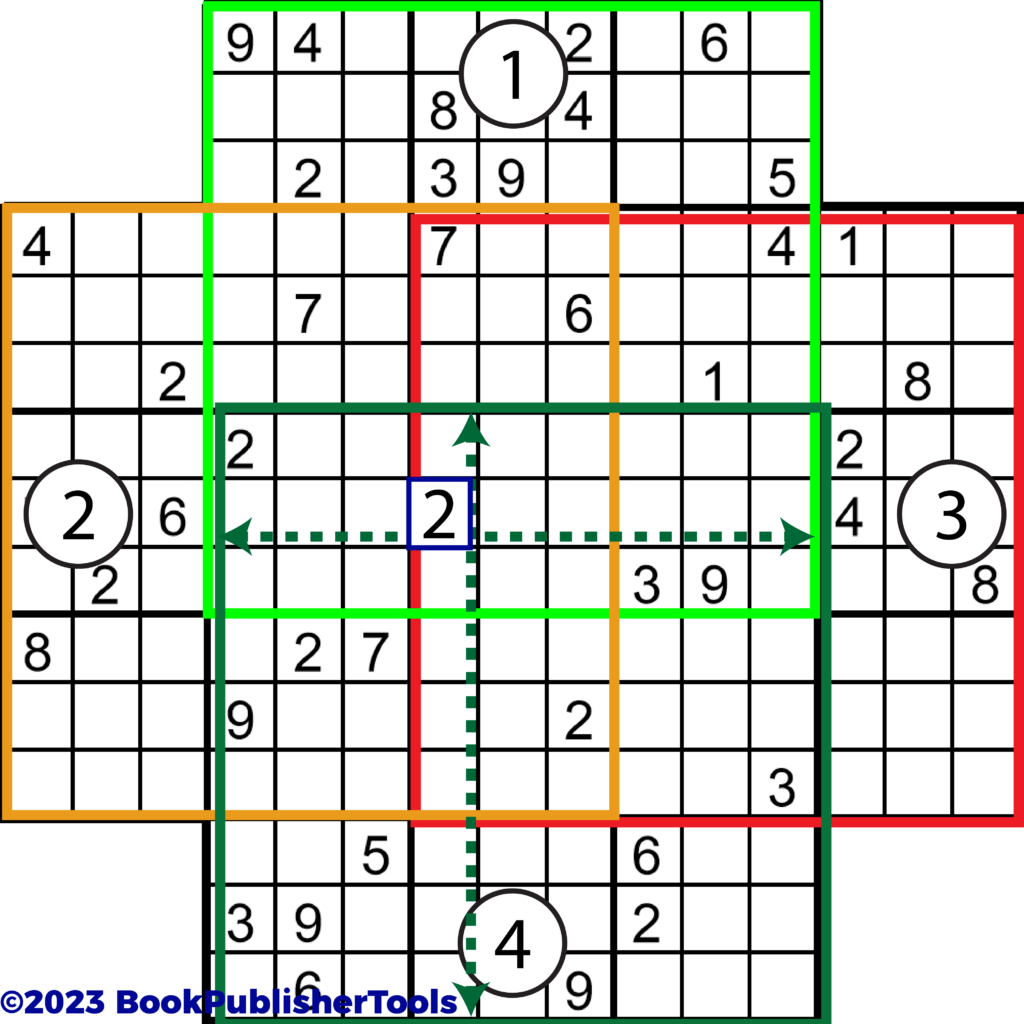
Create Sudoku Flower Puzzles
We hope this article helps you with mastering sudoku flower puzzles. If you need more puzzles, Sudoku Flower is part of our Sudoku Multidokus 2 module in Puzzle Maker Pro.
You can test drive this module in our Free Demo version of Puzzle Maker Pro.
An overview of all modules and sudoku types can be found on the Sudoku Products page.




